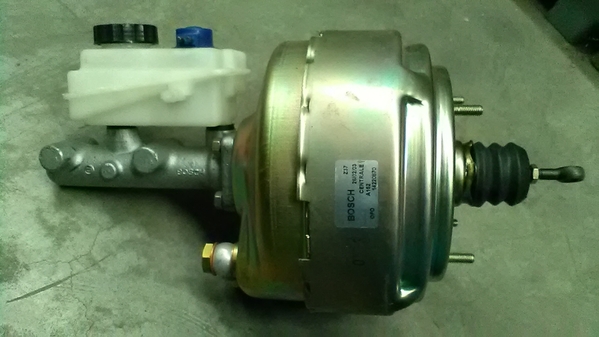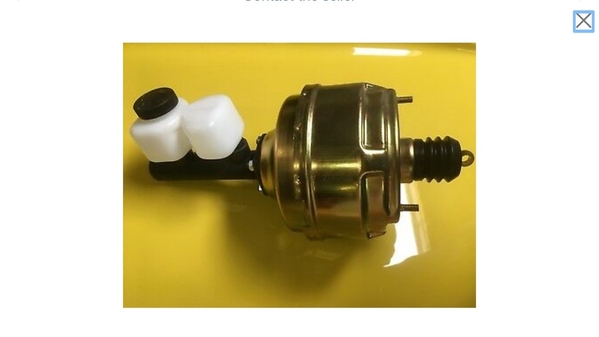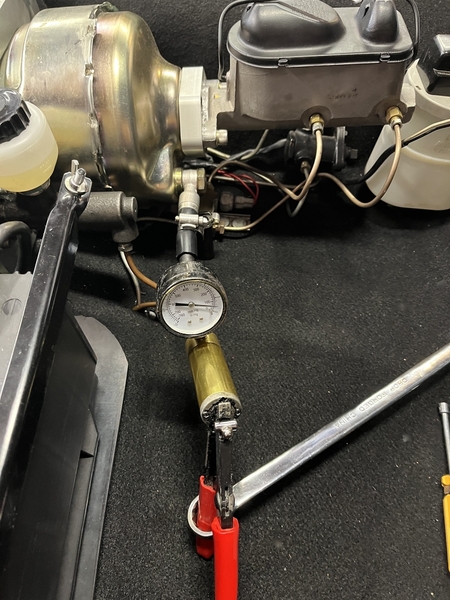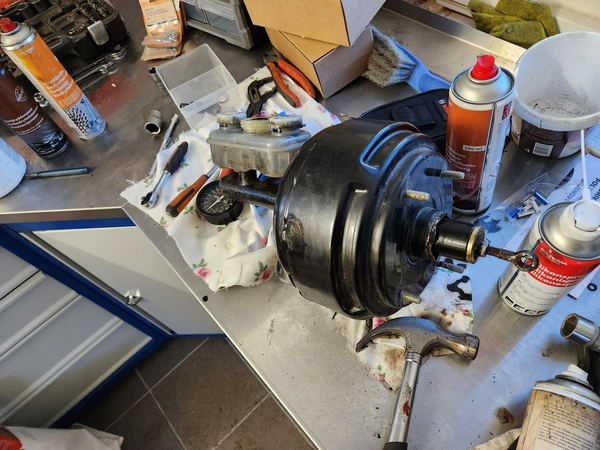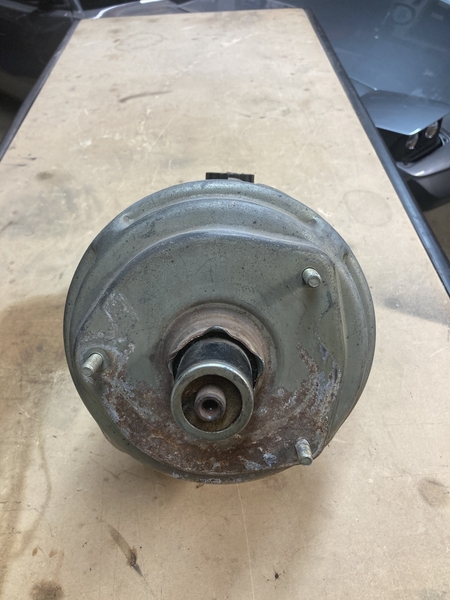Doing some follow up I find:
1. ABS Power Brake (CA) - says rebuild is $150, plating an extra $25.
2. Karp Power Brake supply (CA) says +/-$300 to rebuild, BUT, they say the Bonaldi booster diaphragms are presently unobtainium (unusually small diameter?). He is waiting on samples from a new vendor. Will advise in a week.
3. Harmon Classic Brakes (GA?) confirms diaphragm availability issue and advises that another part of these boosters very often breaks during the process and is unobtainium (Karps guy also warned about this, in case I wanted to try opening one up myself). Harmon won't even try them anymore.
4. John Stuart (Ontario, Canada) - wants me to send the master cylinder AND booster, he'd try and rebuild or he'll cobble together a substitute. Hmmm. $350-$400, better to use the Precision Proformance unit at that rate.
5. Power Brake Exchange (CA)- sent him a photo of the unit, he says he has parts and can rebuild. $180, and they'll plate it too.
Weird pricing on the plating. He says his guy will plate 10 to 100 lbs of parts, flat rate $150. I wonder if I could include some other things too?
6. Whitehorse Restorations/Ed Strain (OR)- one local guy with first hand experience, and one of the vendors above were less than lukewarm about these guys. Haven't called them yet.
I've got three boosters to rebuild, I think I'll send one off to ABS and see how they do and take it from there...


